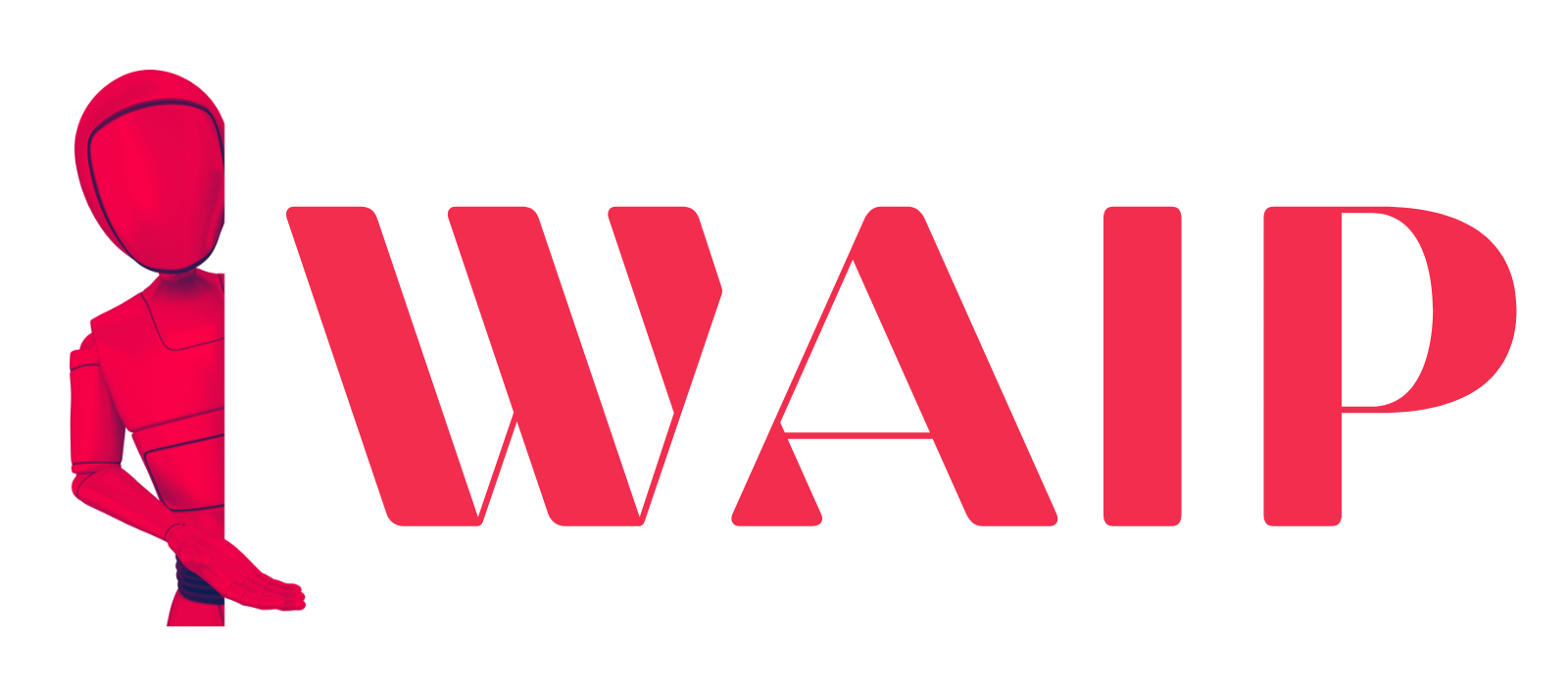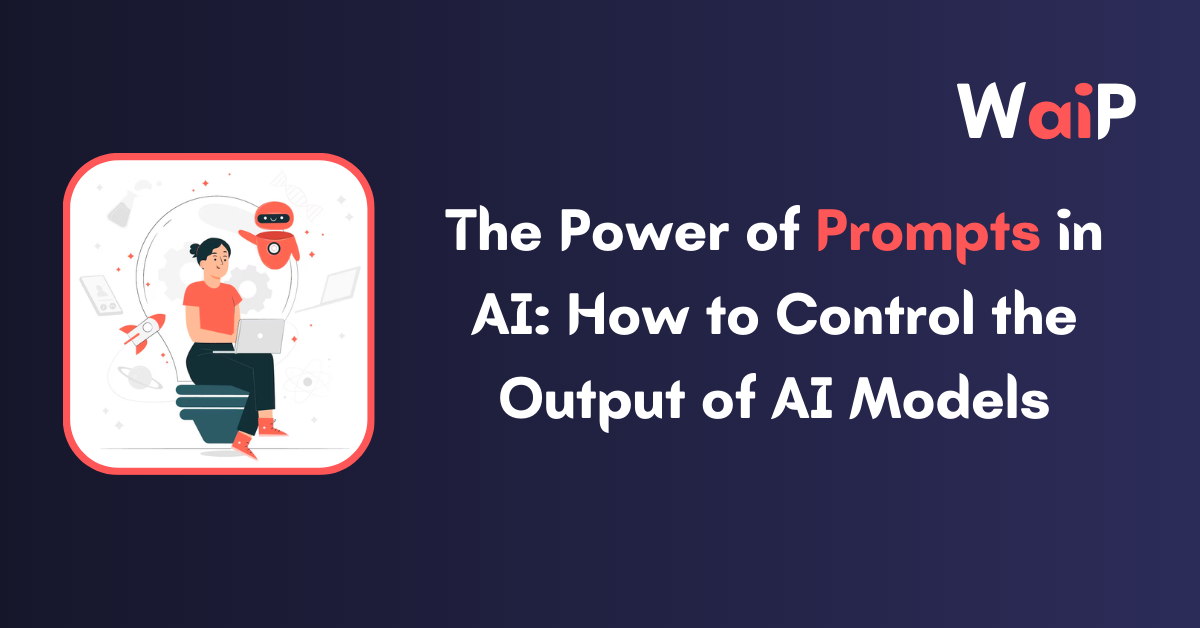Artificial Intelligence (AI) is a technology mimicking human cognitive functions, like problem-solving and learning. In AI, a ‘prompt’ plays a critical role.
It’s essentially a set of instructions in text form that guides an AI model’s response.
Whether generating creative content, translating languages, or answering queries, the output depends heavily on the prompt.
As AI’s capabilities expand, so does the importance of prompt engineering, which crafts these guiding inputs. It’s a fascinating field brimming with opportunities and challenges, and it’s set to revolutionize our interaction with AI, making it more beneficial and accessible for all. The potential to steer AI responses makes the study of prompts an exciting area in AI research.
What is Prompts in AI
A ‘prompt’ in AI is a small piece of instructive text that guides an Artificial Intelligence model to produce the desired output. It can guide the AI to generate text, translate languages, produce creative content, or even answer questions informatively.

Think of a prompt as a compass for AI. It’s based on large sets of human language data. When an AI model receives a prompt, it uses its training to find patterns that match its vast database. This way, it ensures its responses align with the prompt.
For instance, consider the prompt, “Translate this sentence into French: ‘I love the beautiful beach'”. The AI takes this, understands the required action, and ideally provides an accurate translation in French.
Prompting plays a crucial role in harnessing AI’s power, guiding it to fulfill complex tasks that are typically time-consuming for humans. As AI models become more powerful, the art of crafting effective prompts—known as ‘prompt engineering’—grows in significance.
The Importance of Prompts in AI
In the world of AI, prompts play a pivotal role. They’re like signposts, guiding AI models towards the desired results. Let’s take a closer look at their importance:
- Clarity and Context: Prompts provide clarity to AI models. They define the context, helping models understand the type of response expected, such as the topic and style of a poem.
- Boost Creativity: Prompts can encourage AI models to create more original and engaging content. For example, a prompt could guide an AI to write a creative piece of text or generate innovative ideas.
- Improve Accuracy: By using prompts as examples of correct responses, AI models can improve their performance over time. It’s a method for AI to learn from its past mistakes and generate more accurate outputs.
- Facilitate Interaction: Prompts enhance user interaction with AI models. They enable users to convey their expectations to the AI, ensuring the model’s output aligns with the user’s needs.
Prompts, therefore, play a key role in harnessing the power of AI. They help in creating a more productive and interactive human-AI relationship. As AI grows more sophisticated, the role of prompt engineering will be ever more vital.
Different Types of Prompts in AI
In AI, prompts are largely categorized into two types, each serving distinct functions:
- Closed-ended prompts: These are prompts with one specific, correct answer. For example, asking the AI, “What is the capital of France?” expects a single correct answer, “Paris.”
- Open-ended prompts: These prompts don’t have a single correct response. For instance, if the AI is given a prompt like, “Write a poem about love,” there are countless ways it could construct a love poem.
Additionally, prompts can be tailored to various tasks:
- Translation: Here, prompts are used to guide AI models to translate a sentence from one language to another.
- Summarization: In this context, prompts can instruct an AI model to summarize a long piece of text into a concise summary.
- Question-Answering: Prompts can direct AI models to provide answers to specific questions.
For more creative tasks:
- Text Generation: Prompts can help AI models generate creative content, such as poems or stories.
- Image Generation: Some advanced AI models can generate images based on text prompts.
Prompts in AI are crucial for directing the AI’s responses and actions, making them indispensable in AI-human interactions.
The Role of Prompts in Language Models
Language models, a subset of AI, utilize vast text databases for training. They’re capable of producing text, translating languages, crafting creative content, or offering informative responses to questions. Prompts in AI are an integral component of these language models, including GPT-4.
Prompts serve as a guide, giving the model a sense of direction about the desired output, which could range from a poem or a story to answering a specific question. For instance, if the prompt says “Write a poem about love,” GPT-4 would generate a poem that conveys emotions of love.
Prompts in AI can be remarkably influential in guiding the behavior of language models. They help create a variety of creative content, provide informative responses, or even assist in language translation. As language models become more advanced, the role of prompts in ensuring that these models cater effectively to user needs continues to grow in importance.
Examples of prompt usage in language models include:
- Text Generation: Prompts can guide models to generate diverse text forms like poems, stories, or music pieces.
- Translation: Prompts can be used to translate text from one language to another.
- Question-Answering: Prompts can be used to provide informative responses to specific questions.
- Following Instructions: Prompts can direct models to follow specific instructions, like writing a poem using certain words.
Overall, the role of prompts in language models is pivotal, as they help ensure that these models can generate content that aligns with user requirements effectively.
What is Prompt Engineering
Prompt engineering, at its core, is the art of formulating effective instructions or ‘prompts’ to guide AI language models. The intent is to make these models generate desired outputs, ranging from creative text and translations to informative responses.
This technique holds significance as it offers a way to control AI models, particularly for tasks which may be challenging or time-consuming for humans.
For instance, prompt engineering allows us to steer an AI to write a poem or translate complex sentences.
In the AI realm, prompts are crucial but they are not without challenges and limitations. Here are a few:
- Standardization: There’s no unified approach to crafting prompts, which hampers the comparison of study results and the establishment of best practices.
- Inconsistency: Prompts are often created in an ad hoc manner, based on the task at hand. This lack of a systematic method can lead to inconsistent results.
- Bias: If not carefully crafted, prompts can induce bias in the AI’s output, potentially leading to unfair or skewed outcomes.
- Safety: Prompts can potentially lead the AI to generate harmful or offensive content if not properly constrained.
In order to overcome these hurdles, it’s necessary to:
- Establish Standards: Create and adopt standardized methods for crafting prompts, to ensure consistency.
- Promote Research: Encourage research and development in prompt crafting to understand how they influence AI behavior.
- Check for Bias: Implement checks to detect and mitigate potential bias in prompts.
- Prioritize Safety: Develop safety protocols to prevent harmful or offensive output.
While prompt crafting has its challenges, overcoming these can pave the way for more effective and reliable AI outputs. It’s an exciting field with a lot of potential for growth and development.
The Future of Prompts in AI
In the realm of AI, the future of prompts in AI is very promising and holds the potential to greatly enhance human-AI interaction. Here are a few possible developments:
- Advanced Prompt Engineering: We could see the development of more complex prompts that provide better control over AI responses. This could include guiding the tone, style, or emotional nuances of AI-generated content, enhancing the user experience.
- Automation and Tools: Future innovations might include tools that simplify prompt crafting, making it more accessible to developers. This democratization could enable more customized and user-centric AI applications.
- Prompt Learning AI Models: New AI models could be developed, designed to learn and improve based on the prompts provided. This learning capability could result in even more accurate and contextually relevant outputs.
Such advancements would potentially revolutionize the way we use AI. For instance, AI assistants could become more personalized, educational AI tools could be more effective, and AI-driven creative outputs could reach new heights. As prompt engineering evolves, these potentialities underscore the exciting future for this influential technology.
Conclusion
Prompts in AI play an indispensable role in guiding the behavior of AI models. As an evolving field, prompt engineering holds promising potential to enhance accuracy, creativity, and user experience in AI applications.
Though challenges exist, advancements in this realm could revolutionize AI, making it more useful, accessible, and interactive for everyone.
From advanced prompt engineering to AI models learning from prompts, the future is exciting. As AI continues to grow, the importance of prompts in enabling more human-like and contextually relevant interactions cannot be overstated. This truly signifies that we are on the cusp of a new era in AI interaction.

![Best Mobile Games Your Should Try in 2024 [Trending Now] 2 Best Mobile Games](https://wideaiprompts.com/wp-content/uploads/2024/03/Best-Mobile-Games-330x220.webp)



![Best Mobile Games Your Should Try in 2024 [Trending Now] 10 Best Mobile Games](https://wideaiprompts.com/wp-content/uploads/2024/03/Best-Mobile-Games-150x150.webp)


